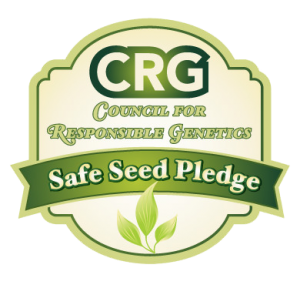Tomato Blossom End Rot

Blossom End Rot is probably the most common tomato “disease” and the most scary of them all. This problem occurs on the actual fruits and destroys the first crop very quickly. After all our hard work planting and watering and watching them grow, literally overnight this black rotten spot shows up on our beautiful new tomatoes. There are many reasons that this can happen but primarily it is a lack of calcium in the fruit production cycle and the fruits literally rot from the bottom up.
Calcium Uptake
Sometimes there is calcium in the soil and the roots of the plant cannot take it up into the stem which interrupts the fruit production. Very wet soil, very dry soil or the back and forth of each can be the cause of this interruption. It is very important when you water your tomato plants to give them deep and less frequent watering so the soil stays moist longer in between watering.
The Best Technique For Watering
The best technique for watering is to turn a hose on at a slow trickle and leave it running for about 1/2 hour to an hour, depending upon your weather conditions and your rainfall. In most areas, if rainfall is about one inch per week, you should not need to water your plants at all. Sprinklers do more damage than good as they generally just wet the leaves, which spreads diseases, instead of soaking the soil where the roots are. Mulching with a layer of leaves or straw shades the roots and keeps the moisture from evaporating too quickly. If rainfall is extremely heavy, you can mulch with black plastic to prevent too much water going to the roots.
pH Problems
Another cause of blossom end rot is pH problems. If you don’t have the proper soil pH, the plants roots cannot function properly and turn the calcium into a form that it needs. It is like trying to drink lemon juice for the plant! Acidic soil or Alkaline soil are measured by testing the soil every year and amending with either Lime or Gypsum to correct extreme conditions.
As a general rule, if you get regular to heavy rainfall all year long you probably have Acid soil and need to add lime every year at a rate of 1# per 100 sq. feet. This can be found at any garden center and is very inexpensive.
Hydrated lime can also be purchased in our catalog and is fast acting. If you get almost no rainfall at all in summertime, you probably have Alkaline soil and need to amend with Gypsum.
Lack of Nutrients
The other cause of blossom end rot is lack of nutrients which includes calcium. If you did not need to add Lime, it is likely that your soil will have enough calcium in it for the plant but possible that it does not. Chemical fertilizers generally have some calcium added to them as a trace element but organic fertilizers do not.
Eggshells, oyster shells, crab shells are all made of calcium and make great additives to increase the calcium levels in your soil. These can be added about every 1-2 years as you plant.
Immediate Treatment
If you are reading this and you have blossom end rot occurring now, the best treatment is a quick acting product called “Blossom End Rot Stop spray” which is a liquid form of calcium that can be sprayed on the fruit and leaves to stop the damage temporarily. Then adding a fertilizer which contains calcium should correct the soil conditions. If your soil is acidic then adding lime that is already water based, will change the pH and prevent more rotting. These products are available in our catalog.



